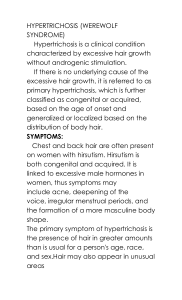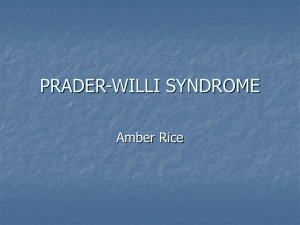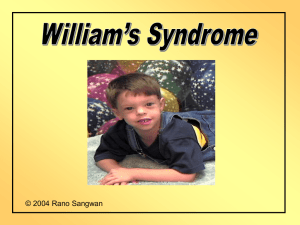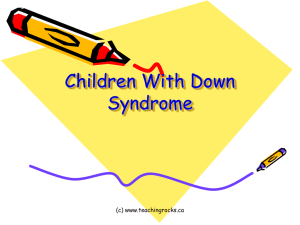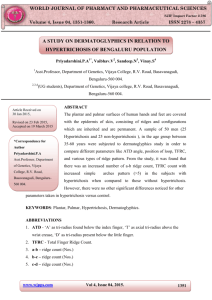Werewolf Syndrome
advertisement
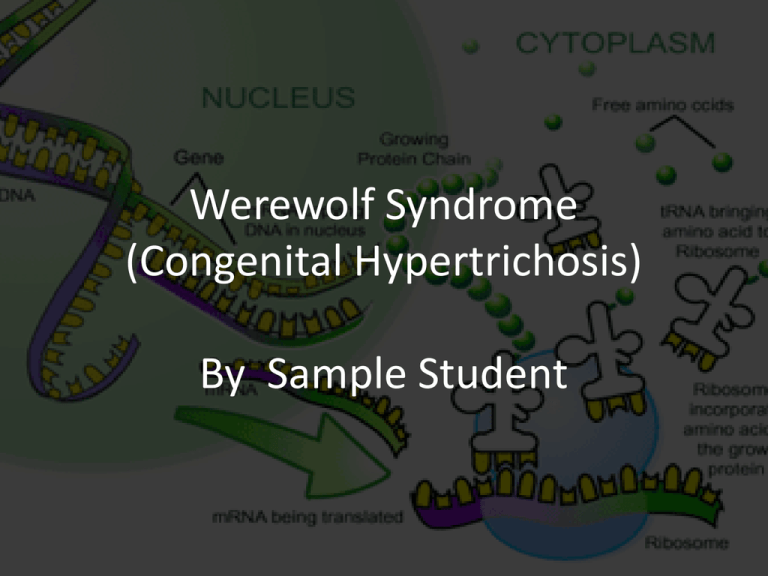
Werewolf Syndrome (Congenital Hypertrichosis) By Sample Student Werewolf Syndrome (ABC News) History History – In 1648, Aldrovandus first documented a family with hypertrichosis. Originally from the Canary Islands – Petrus Gonzales was brought to France as a curiosity for th nobles. Gonzales' family that two daughters, a son, and a grandchild all had hypertrichosis. – Altrovandus dubbed them the Ambras family, after the Ambras castle near Innsbruck, where portraits of the fami were found. – Over the next 300 years, more than 50 similar-appearing cases were described, and 34 patients with presumed congenital hypertrichosis were identified.Scientist Rudolf Virchow described a form of hypertrichosis accompanied b gingival hyperplasia in 1873. History The hairy family of Burma has a 4generation pedigr of congenital hypertrichosis lanuginosa dating back to 1826. Earlier generations were in the emplo of the Ava court, b later generations often earned a liv as sideshow attractions in the 1880s. Diagnosis – Signs & Symptoms • Extremely rare, unlike acquired forms, is always prese at birth. • Characterized by the presence of fully pigmented terminal hair over entire body. • Usually accompanied by gingival hyperplasia. • This form is most responsible for the term "Werewolf Syndrome" because of the thick dark hair that appear Genetic Mutation – The term Ambras syndrome was coined. – Two cases of Ambras syndrome were associated with alterations in chromosome 8. – Tadin et. Al. analyzed the original patient described by Baumeister and detected a inversion of chromosome 8 – A second patient reported by Balducci, an association was made with an insertion of chromosome 8, as well as a complex deletion encompassing four separate chromosom breakpoints. – Research suggests that this region of chromosome 8 conta a gene involved in regulation of hair growth. Genetic Mutation • No laboratory tests are indicated for patients with congenital hypertrichosis. • The diagnosis of congenital hypertrichosis lanuginosa (CHL) is based on clinical and histologic findings, and laboratory workup is necessary; however, laboratory values may be used to exclude other causes of hypertrichosis. • The diagnosis of Ambras syndrome may be supported by inversions involving breakpoints in the region of band 8q22. Treatment • The use of eflornithine (Vaniqa cream), 13.9% or hair removal by means of repeated shaving, depilatory methods (eg, chemical, electric methods), or bleachin can improve congenital hypertrichosis lanuginosa (CH patients’ appearance. • Older techniques of hair removal are mentioned in th literature; these rarely used techniques include diathermy and radiation therapy. • Clinicians should consider the use of antidepressant medications in patients with depression. Genetic Consultations • Genetic consultation may be indicated for the family members of patients with congenital Ambras syndrome. • Congenital hypertrichosis lanuginosa and Ambras syndrome may have an autosomal dominant pattern inheritance; however, an association with a genetic defect has not been demonstrated in all patients. • Belengeanu et al describe 2 siblings with purported Ambras syndrome born to normal parents and propo that these patients might represent either an autosomal recessive pattern or germline mosaicism. Genetic Consultations • Germline mosaicism –This is the clinical situation when a person ha two populations of cells in the gonads (testes or ovaries) –One population of cells containing the usual genetic complement whilst the other contain a DNA mutation or chromosome anomaly. Works Cited (sample) • Taylor, Sarah K. “Congenital Hypertrichosis Lanuginosa Treatment & Management” Medscape Reference, WebMD LLC. 2 November 2011. http://emedicine.medscape.com/article/1072987overview
